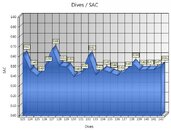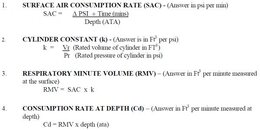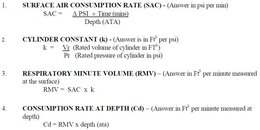Other than 'local custom' why do people refer to RMV (respiratory minute volume, measured in cubic feet) as SAC or SCR (surface air consumption or surface consumption rate, which is measured in PSI)? NOAA clearly defines their equations for SAC (pressure) and RMV (volume) with RMV being a cylinder specific calculation based on max volume and working pressure.
http://www.ndc.noaa.gov/pdfs/AirRqmtFormulas.pdf
I understand that planning for a more technical dive will focus on gas volumes rather than pressures, but most of us are recreational divers and our gauges/computers reflect PSI not RMV. At depth what good does it do me to know my surface volume consumption rate?
I'm old and lazy so my SAC/RMV are not what they were 20 years ago, but as a rec diver, does this chart really do me any good? (from DivingLog 5.0)

http://www.ndc.noaa.gov/pdfs/AirRqmtFormulas.pdf
I understand that planning for a more technical dive will focus on gas volumes rather than pressures, but most of us are recreational divers and our gauges/computers reflect PSI not RMV. At depth what good does it do me to know my surface volume consumption rate?
I'm old and lazy so my SAC/RMV are not what they were 20 years ago, but as a rec diver, does this chart really do me any good? (from DivingLog 5.0)







